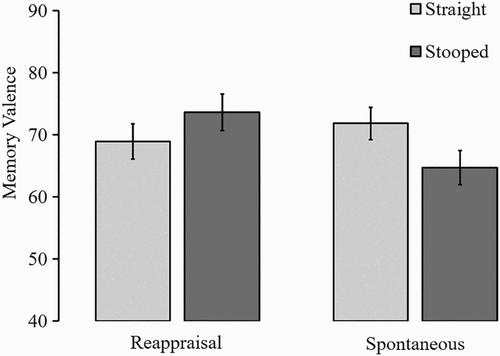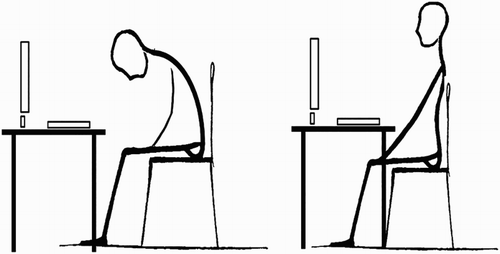Figures & data
Table 1. Means and standard deviations (M (SD)) of negative mood on three time points (t1: before mood induction, t2: after mood induction, t3: after thought listing) for the two different mood conditions (neutral vs. negative), and three body posture conditions (stooped vs. straight vs. control) (Experiment 1).
Figure 3. Posture effect on negative mood. Negative mood on three time points (t1: before mood induction, t2: after mood induction, t3: after thought listing) for three body posture conditions (stooped versus straight versus control) with standard error bars (1-SE) adjusted for within variability (Experiment 1).
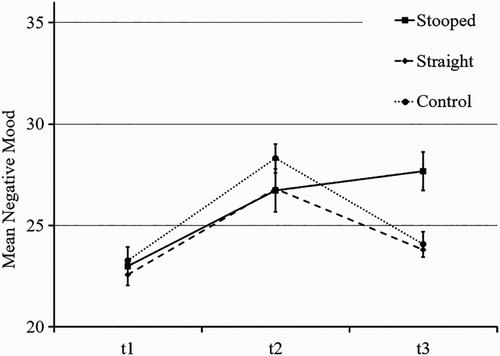
Table 2. M (SD) of the proportions of negative thoughts for the different mood conditions (neutral vs. negative), and body postures (straight vs. stooped vs. control) (Experiment 1).
Figure 4. Posture effect on valence of thoughts. Proportion of negative thoughts for the different body posture conditions (straight versus control versus stooped), and mood induction conditions (negative versus neutral) with standard error bars (1-SE) (Experiment 1).

Table 3. M (SD) of negative mood on three different time points (t1: before mood induction, t2: after mood induction, t3: after writing task) for the two different body posture conditions (straight vs. stooped), and two regulation conditions (spontaneous vs. reappraisal) (Experiment 2).
Figure 5. Posture effect on mood. Negative mood on three time points (t1: before mood induction, t2: after mood induction, t3: after thought listing) for body posture conditions (stooped versus straight) with standard error bars (1-SE) adjusted for within variability (Experiment 2).
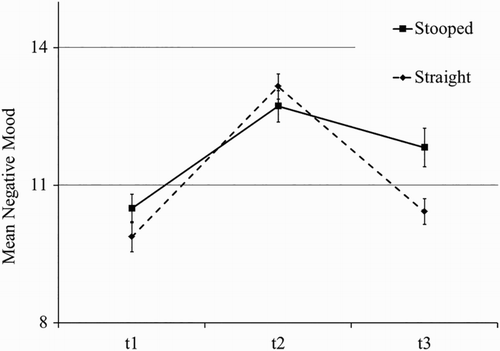
Figure 6. Regulation effect on mood. Negative mood on three time points (t1: before mood induction, t2: after mood induction, t3: after thought listing) for two regulation conditions (reappraisal versus spontaneous) with standard error bars (1-SE) adjusted for within variability (Experiment 2).
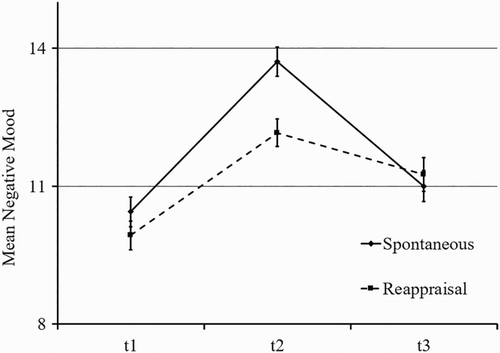
Table 4. M (SD) of valence of the recalled memories for the different posture (straight vs. stooped), and regulation (spontaneous vs. reappraisal) conditions (Experiment 2).
Figure 7. Posture and regulation effect on valence of memory. Mean valence of the recalled memories for the different body posture conditions (straight vs. stooped), and regulation conditions (reappraisal versus spontaneous) with standard error bars (1-SE) (Experiment 2).Footnote6
